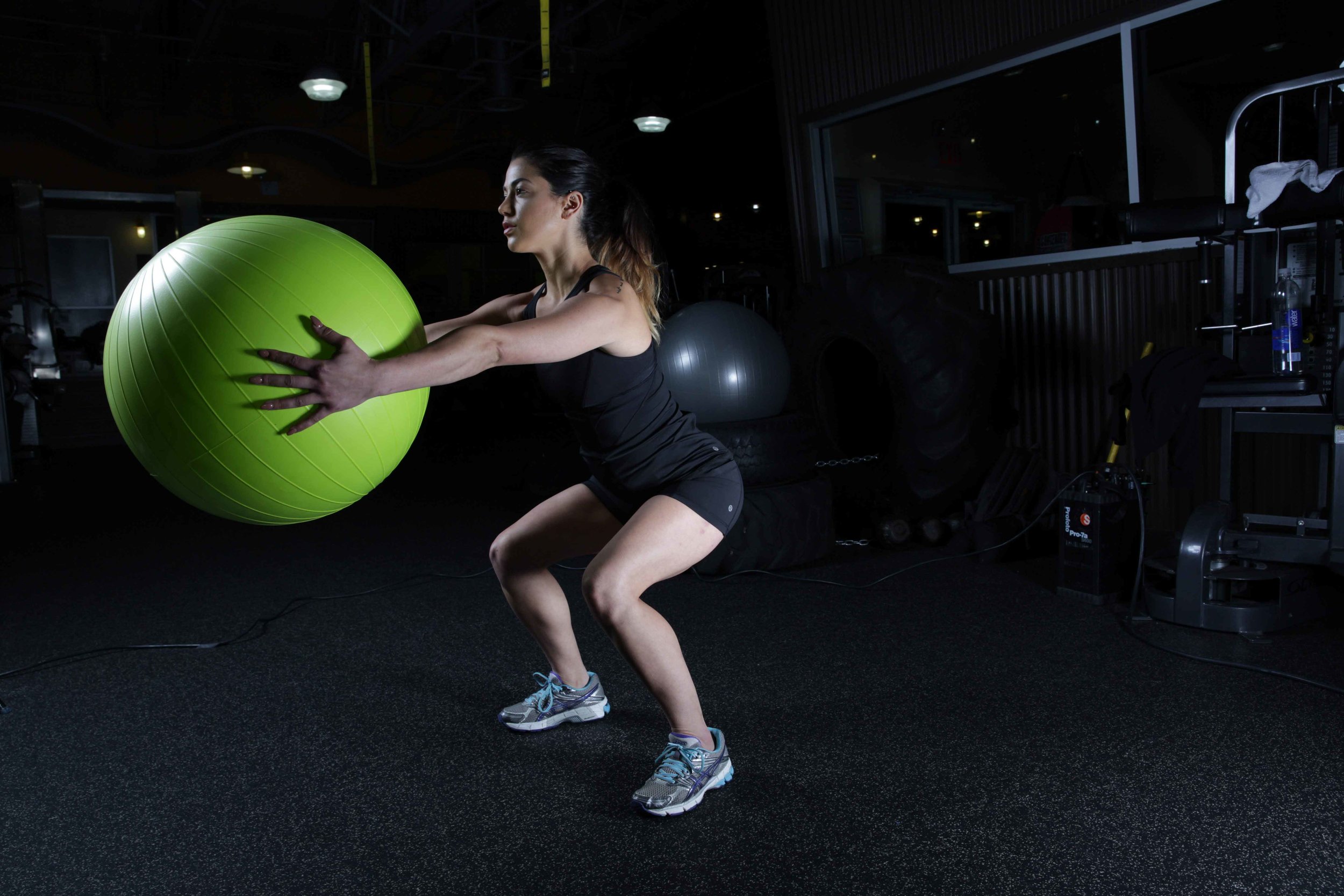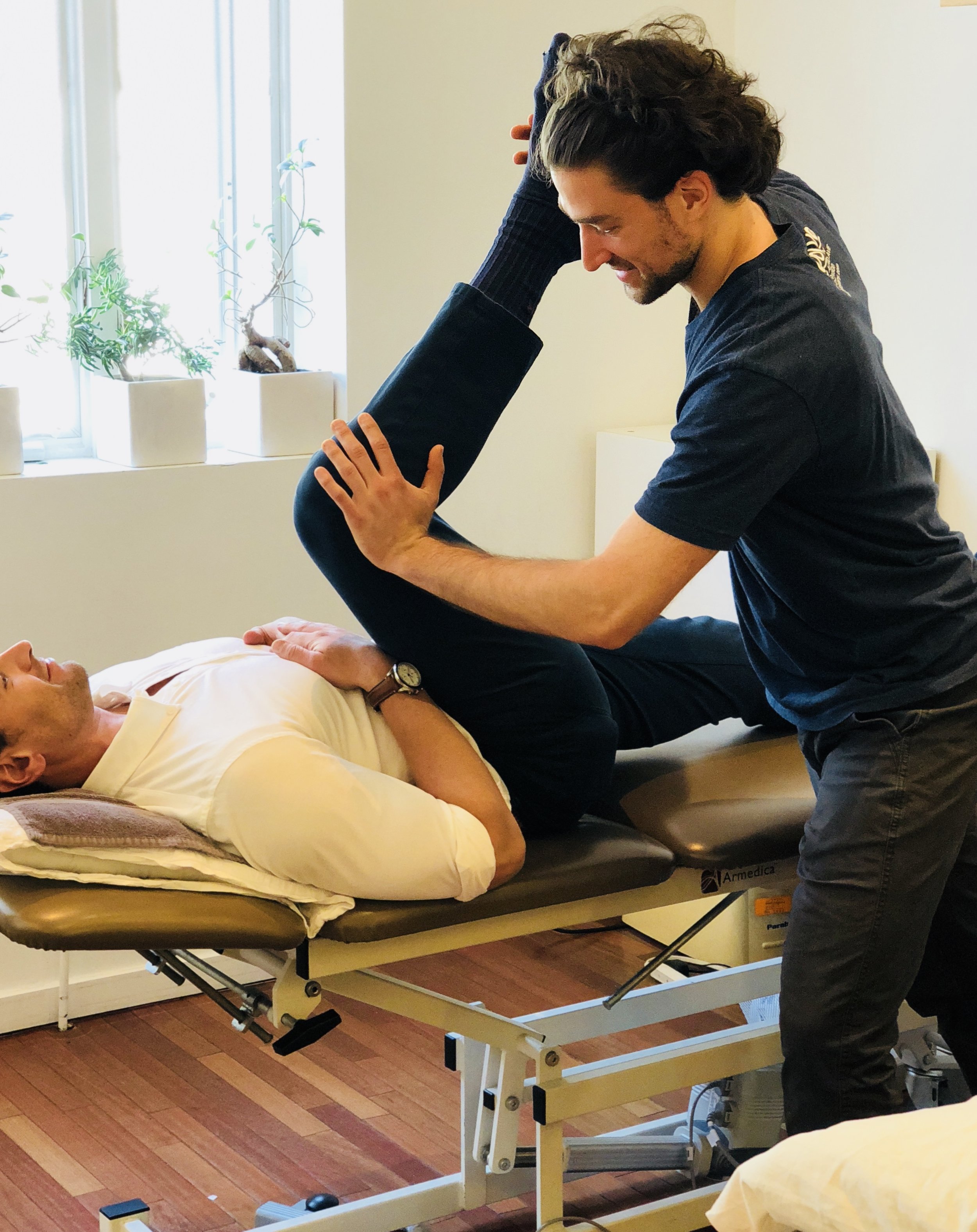
Brooklyn Physical Therapy News- Evolve NY
What is Assisted Stretching and How can it help me?
What is Assisted Stretching?
Assisted Stretching is a hands-on method of stretching in which a person is gently supported through a series of stretches by a trained practitioner. Assisted Stretching is more effective than stretching by yourself because the practitioner stabilizes your joints in positions that allow you both to isolate and stretch one muscle at a time while expanding your fullest range of motion.
Nick Macaluso
Stretching is kind of like flossing... everyone knows they should be doing it, but who really does it? It’s one of those things that we’re all going to start making into a habit tomorrow, but somehow tomorrow never comes. To our credit though, when we get that cramp in our thigh, or piece of spinach in between our teeth, we know exactly what we need to do. But how do we identify the exact muscles that tend to cramp or spasm, and prevent it from happening? How can we isolate and stretch the muscles we hold the most tension in to prevent and alleviate pain? How can we most effectively just enhance our mobility for a higher quality of life? The answer, Assisted Stretching.
What is Assisted Stretching?
Assisted Stretching is a hands-on method of stretching in which a person is gently supported through a series of stretches by a trained practitioner. Assisted Stretching is more effective than stretching by yourself because the practitioner stabilizes your joints in positions that allow you both to isolate and stretch one muscle at a time while expanding your fullest range of motion. The benefit to being able to isolate and stretch individual muscles is to give both you and the practitioner a better understanding of where exactly your body may be out of alignment. Perhaps your low-back pain is just a result of tight hamstrings, or your sciatica is just a result of tight glutes. Both of which can be relieved from general stretching, but without the assistance of a trained practitioner, it is nearly impossible to isolate the exact muscle and relieve its tension.
Why is Assisted Stretching so productive?
Aside from being able to realign your body by isolating the muscles being stretched, Assisted Stretching is an opportunity for you to relax and repair your body and mind while still using your time constructively. Many of us after long days or weeks want nothing more than a massage to take the tension out of our backs, necks, shoulders, or hips, but aside from the relaxation, what is the massage doing to prevent that tension from returning? Most of the time, tension builds in areas of our bodies that are either overactive or misaligned due to habitual poor posture. While massages are great, if you’d rather spend your time relaxing AND simultaneously preventing the tension from returning, Assisted Stretching is for you.
Stretching is one of those things that people spend their lifetime studying and writing about because of its incredible complexity and near infinite amount of benefits. But instead of wasting your time with all that, experience the hype for yourself by scheduling a 20 minute Assisted Stretching session with Nick Macaluso at Evolve Physical Therapy. Sessions run in 20 minute increments and can last anywhere from 20 minutes to 2 hours depending on how long you would like to be stretched. While this service is open to the public, all active patients of Evolve must first speak to their therapist to ensure an Assisted Stretch is right for them.
For more information or any questions, give us a call at 718-258-3300 or contact us today!
What Does Foam Rolling Do for Me?
Foam Rolling has become one of the more popular health and fitness topics over the past few years or so. These tools can be found in many different shapes, sizes, and colors with varying textures and firmness to fit everybody’s apparent need. If you google this, you will find claims that foam rolling can help you improve range of motion, muscle strength and performance, and decrease pain…
By Nick Mazzone, PT, DPT, CSCS
Foam Rolling has become one of the more popular health and fitness topics over the past few years or so. These tools can be found in many different shapes, sizes, and colors with varying textures and firmness to fit everybody’s apparent need. If you google this, you will find claims that foam rolling can help you improve range of motion, muscle strength and performance, and decrease pain. It is also often used as part of a warm-up and cool-down within an exercise program.
Who do I believe?
Well, unfortunately there are very few studies on foam rolling and its effects on our muscles and connective tissues. The following bullet points can be used as a summary of the current body of research on this topic:
Positive Effects of Using a Foam Roller
· Increased blood flow
· Increased tissue temperature
· Better short-term improvements in range of motion versus static or dynamic stretching
· Decreased sensation of pain
What Foam Rolling Will NOT do for You
· Increase strength or power output
· Give lasting improvements in range of motion when used as a stand-alone treatment
· Lead to complete resolution of pain/symptoms when used as a stand-alone treatment
Let’s Discuss these findings…
As you can see, there are some benefits to using a foam roller, however I feel it is important that we clear up some of the common misconceptions on the topic…
Many people who use a foam roller use it in isolation as a method of improving their mobility. I understand why people want this to be true; foam rolling is much easier and less strenuous than stretching. Unfortunately, you will not receive lasting effects from foam rolling alone. While foam rolling will only provide temporary improvements in range of motion, we can take advantage of this temporary improvement by proceeding to perform static or dynamic stretching. With consistency, this can help to improve range of motion on a more permanent basis (although more studies are needed on this topic).
There is also no evidence that foam rolling increases strength or explosiveness during your workout, however one may argue that by utilizing a foam roller you are increasing blood flow to the area, and therefore, helping to facilitate contraction of specific muscles during exercise.
Foam Rolling may also help decrease pain by working to desensitize the area through repetitive stimulation and can help promote tissue healing by improving local blood flow.
How do you suggest I use the foam roller in my daily life?
· In conjunction with a stretching program for improving range of motion
· As part of a warmup routine, especially for activities that have high mobility requirements
· As an alternative to pain killers for temporary pain relief
· As a method of soothing sore, painful muscles after a physically demanding workout
Check out this video for a brief introduction on how to use a foam roller:
For more information or any questions, give us a call at 718-258-3300 or contact us today!
Resources:
Su, H., Chang, N., Wu, W., Guo, L., & Chu, I. (2017). Acute Effects of Foam Rolling, Static Stretching, and Dynamic Stretching During Warm-ups on Muscular Flexibility and Strength in Young Adults. Journal of Sport Rehabilitation,26(6), 469-477. doi:10.1123/jsr.2016-0102
Cartoon depicting man foam rolling retrieved from https://www.gq.com/story/foam-roller-tips
Nick Mazzone received his doctorate in Physical Therapy from Stony Brook University. He has a strong background in strength and conditioning and aims to bridge the gap between strength training and physical therapy. Nick believes that a lifestyle centered around physical fitness and mental well-being are vital to one’s successes and happiness. For this reason, he educates his patients on pain science and helps empower them and motivate them to reach their goals every day. You can find him at Evolve Physical Therapy in Mill Basin, Brooklyn.






